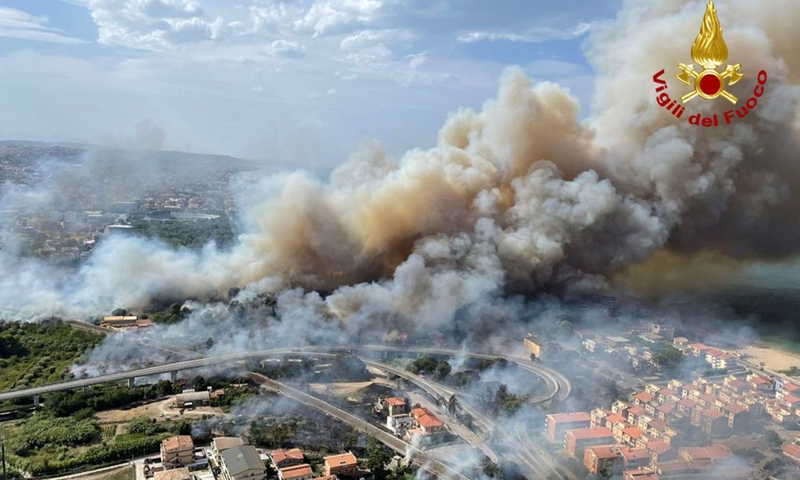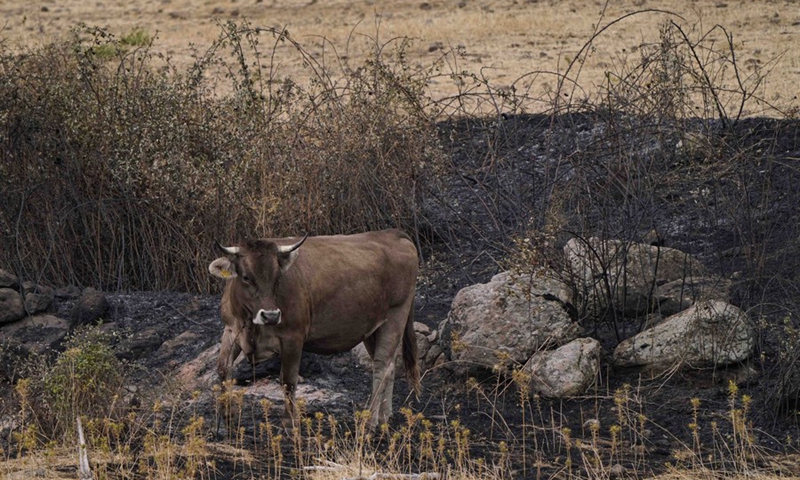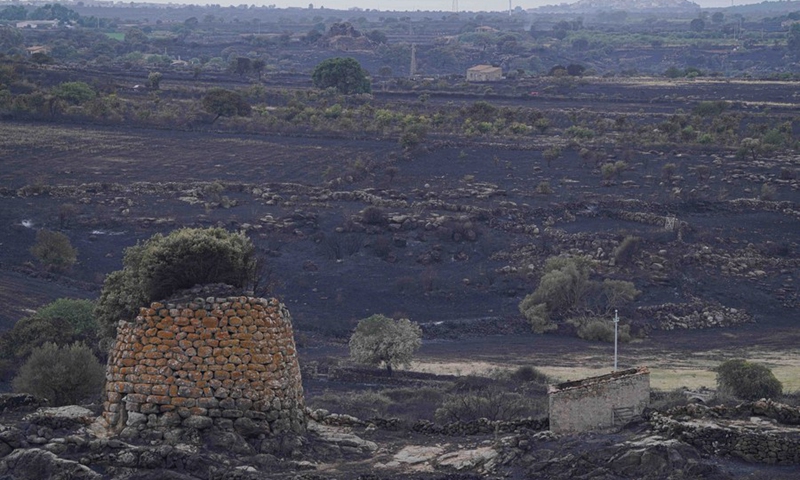
Photo taken on Aug. 1, 2021 shows wildfires in Pescara, Italy.(Photo: Xinhua)

A cow is seen in a burned area in Oristano, Sardinia, Italy, on July 26, 2021.(Photo: Xinhua)

Photo taken on July 26, 2021 shows a burned area in Oristano, Sardinia, Italy.(Photo: Xinhua)
Amid record high temperatures, wildfires, hailstorms, tornadoes, and mudslides, Italy is in the grip of its worst period of extreme weather in recent history. A leading climate expert has warned that the current situation may prove to be the "new normal."
According to meteorologist Roberto Morgantini, a specialist in extreme weather phenomena, events like those witnessed in Italy in recent weeks have become far more common in the last decade.
"Back in the 1980s and 1990s, Italy used to see an average of an extreme weather event every month, maybe every two months," Morgantini told Xinhua. "Now we are seeing four or five a month, plus many, many smaller weather-related events."
This summer, there has been no shortage of events in Italy to illustrate that point. Major wildfires have raged on the island of Sardinia, and in the dry southern and central areas of the country. The elderly, and other vulnerable segments of the population have been warned by local officials to stay indoors during the hottest parts of the day.
Heavy rains have sparked floods and mudslides in Lombardy and in the mountain region of Trentino, where around 100 guests were forced to evacuate a hotel when it was submerged by earth and debris. Dozens of areas around Italy have reported massive hailstorms in recent weeks, with hailstones the size of tennis balls causing damage to cars and other property, as well as to agriculture.
According to the European Severe Weather Database, Italian farm group Coldiretti reported at the start of the month that the number of ice storms in the country this summer was nearly triple that of a year ago -- averaging 11 per day.
Confagricoltura, an agricultural sector group surveying damage, estimated that total lost income due to damage to crops from extreme weather could add up to 2 billion euros (2.4 billion U.S. dollars).
"Agriculture is the first economic sector to suffer the consequences of the climate crisis this season, with fruit and vegetables ready to be harvested after a long year of work and investment lost," Confagricoltura said in a statement.
The country's Civil Protection Service even issued a warning to travelers, urging them to avoid the fires in the southern part of the country and heavy rainfall in the north, and asking residents to report even the smallest wildfire or mudslide to authorities.
Morgantini and other climate and weather experts say that while it is impossible to link any one specific weather event to the phenomenon of climate change, it is clear that the rising number and increased intensity of these events is more severe because of the impact of climate change.
"Today we are seeing the impact of the lack of action to confront climate change 10 or 20 years ago," he said. "We hear talk about initiatives to reduce the factors that have led to climate change now, and we should absolutely do that. But that won't have an impact now. We will see the impact of these actions a generation from now."
In the short term, Morgantini had some simple advice: "We have to get used to what is happening now, this is the new normal," he said.






